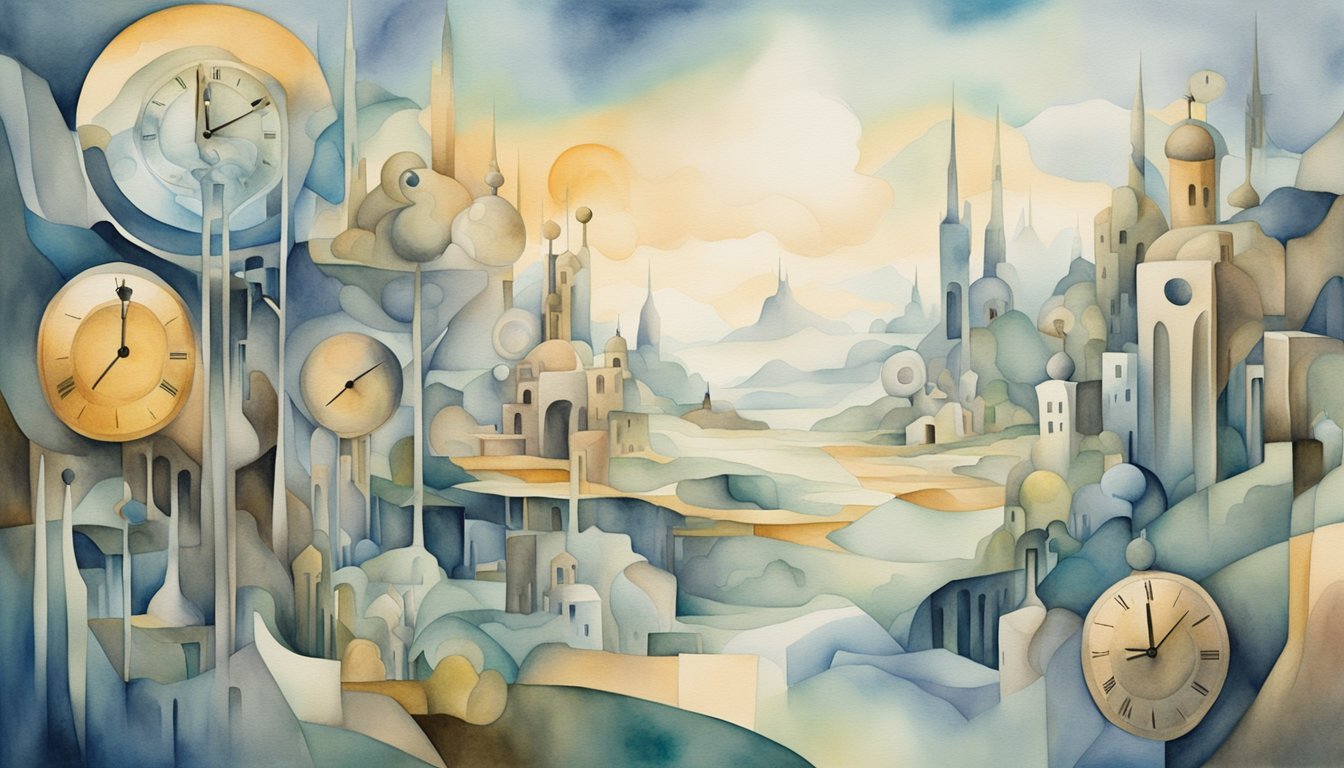Life and Career of Salvador Dalí
Salvador Dalí, the renowned Spanish Surrealist painter, carved a niche with striking and bizarre images throughout his prodigious career, leaving a lasting legacy as one of the most influential artists of the 20th century.
Early Years and Influences
Born on May 11, 1904, in Figueres, Catalonia, Spain, Salvador Dalí showed his aptitude for art from a young age. He first attended the Municipal Drawing School, where he developed a foundation in the fundamentals of drawing. Influenced by various artistic movements including Impressionism and the Renaissance, as well as the contemporary works of Spanish conceptual artist Ramon Pichot, Dalí’s earlier works included charcoal drawings and his well-received Impressionist paintings. Sigmund Freud’s exploration of the subconscious had a significant impact on Dalí’s direction toward the world of dreams and symbolism.
Rise to Fame
His move to Madrid for his formal education in art led to his encounters with other soon-to-be notable Spanish artists. Dalí’s immersion in the bustling art scene in 1920s Spain saw a transition from his initial academic works to the cubism that was fashionable among avante-garde Parisian circles. His first surrealistic works emerged as he joined the Surrealists in Paris, where he further developed his distinctive style characterized by meticulous detail and dream-like otherworldliness. It was the fusion of the surreal with the precise attention of the realist that marked his creations as intricate and intellectually complex.
Major Works and Artistic Style
Dalí is best remembered for his surrealist masterpieces, notably “The Persistence of Memory,” famous for its soft melting watches and vivid depiction of time’s fluidity. His oeuvre includes a vast array of mediums, from the canvases that bore witness to his highly imaginative landscapes, to film, sculpture, and even jewelry design. Dalí’s development of the paranoiac-critical method, which enabled the simulation of delusional states and the visual manifestation of the artist’s subconscious, culminated in a body of work that has captivated and intrigued the art world. His eccentric persona and technical prowess allowed him to push the boundaries of artistic expression, creating dreamlike compositions that continue to spark fascination. Dalí’s ability to blend reality with the absurd mirrors the intrigue found in extraordinary real-life events, such as Jean Hilliard’s survival story, where the improbable becomes undeniable. His legacy persists not only in museums but also in popular culture, where his influence can be seen in contemporary arts, fashion, and even psychology.
Later Years and Legacy
After returning to Spain during the Spanish Civil War, Dalí’s career encompassed various stages, including his interest in nuclear mysticism in the post-WWII era. His return to classical themes never hindered his continuous exploration of modernity. He dedicated part of his later life towards the creation of the Dalí Theatre-Museum, in his hometown of Figueres, a surrealist object in itself designed to be the world’s largest surrealist structure. He passed away on January 23, 1989, yet his legacy persists, markedly evident in the establishment of museums such as the Salvador Dalí Museum in St. Petersburg, Florida.
Personal Life
Dalí’s personal life was as extravagant and theatrical as his art. He met his future wife, Gala, in the 1920s, and she became his lifelong muse and manager. Their intense and complex relationship permeated his work and personal life, further fuelling his eccentric persona. Equally notorious were his flamboyant public appearances and his playful engagement with the media.
Dalí in Popular Culture
Recognized as much for his showmanship and flamboyant personality as for his art, Dalí left an indelible mark on not only fine arts but also film, fashion, and advertising. His legacy is a reminder of the lasting impact of surrealism on popular culture, influencing contemporary artists, like Jeff Koons and Damien Hirst. His signature motifs, like ants, eggs, and melting clocks, have permeated the cultural consciousness, becoming synonymous with the idea of the surreal and the avant-garde.
Artistic Movements and Influences on Dalí

Salvador Dalí is one of the most iconic figures of Surrealism, whose work was influenced by various artistic movements and his own unique visions. His legacy is complex, interwoven with classical techniques and the avant-garde movements of his time.
Prior Influences
Dalí’s early work was influenced by Impressionism and Cubism, as well as the Renaissance masters. His admiration for classical art is evident in his sophisticated painting techniques. Moreover, Dada’s irreverence and focus on the absurd also had a significant impact on his approach to art.
Contemporaries and Rivals
Artists such as Joan Miró and René Magritte, fellow proponents of Surrealism, influenced Dalí. He was both inspired by and rivaled with Pablo Picasso, whose work in Cubism resonated with Dalí’s exploration of the subconscious. His relationship with the Surrealist leader André Breton was fraught, yet it was within this group that Dalí’s style flourished.
Dalí’s Impact and Collaborations
Dalí collaborated with a range of artists and thinkers, significantly impacting fashion, graphic arts, and film. His joint work with Luis Buñuel on films is renowned for its innovative approach. He also infiltrated the world of fashion through collaborations, impacting the domain with his distinctive vision.
Dalí Beyond Painting
Beyond painting, Dalí’s work in sculpture, photography, and design was groundbreaking. He was known to dabble in jewelry design and even wrote literature. Dalí’s photographic endeavors often blurred the lines between dreams and reality, a characteristic of his broader artistic approach.
Post-Dalí Artistic Developments
After Dalí, art movements such as Postmodernism continued to explore the themes of Surrealism and the subconscious. Artists took cues from Dalí’s exploitation of dreams and delved into the use of mysticism and science in art.
Critique and Interpretation of Dalí’s Work
Critics have long debated the intricacies of Dalí’s work, often focused on the interpretation of religious themes and scientific developments. Dalí’s fascination with atomic science and religious symbolism offered a complex critique of contemporary culture. His exploration of the mind’s landscape has led to varied interpretations and critiques, confirming his role as a cornerstone of Surrealist thought.

